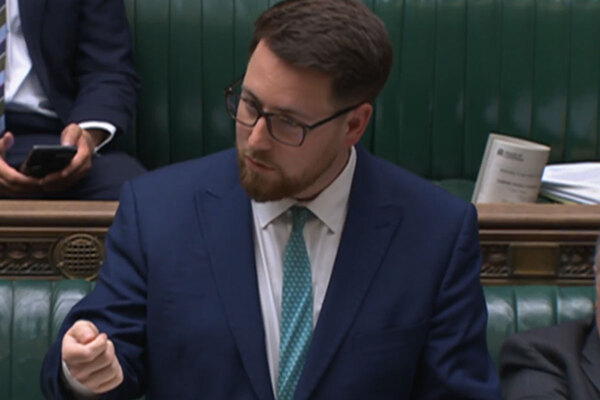You are viewing 1 of your 1 free articles
Malthouse: percentage of social rented housing being built is not enough
The current level of homes being built for the social rent market is not enough, the housing minister has said.
Addressing the Savills eighth annual housing seminar in central London, Kit Malthouse said he hopes changes in policy will kickstart a generation of councils building homes at lower rents.
Government figures this month revealed that of the 222,190 net additional dwellings to be created in the 12 months up until 31 March 2018, only 6,463 were new social rent homes – just under 3% of all new dwellings.
When asked at the seminar whether 3% social rent was enough as a percentage of net additional dwellings, Mr Malthouse said that it was not.
However, he was reticent to provide a number for what the level of social rent homes the government should be targeting by 2020.
Mr Malthouse told the conference: “I can’t sit and give a Whitehall directive target for the nation’s homes, [3% isn’t enough] and that is why we have removed the HRA cap... we hope that this will kickstart a new generation on council houses in particular that are at social rent.”
He added: “We are now giving councils no restrictions to get back into the business of building homes, the initial number that people believe they can build over the next couple of years is 10,000, but I hope and believe that local councils will be really keen on this and can be more ambitious.”
The debt cap, scrapped after the Budget in October, was imposed by the coalition government led by the Conservatives in 2012.
That government also removed all state funding for social rented housing for the first time since World War II, directing a limited pot of grant to higher affordable rents instead.
In majority government, it removed grant from affordable rented housing, funding homeownership products exclusively, and sought to limit the amount of low-cost rented housing built through the planning system. Only over the past 18 months has the tenure returned to the government agenda.
The housing minister was also quizzed on whether the Right to Buy for housing association tenants was still an ambition for the government.
Currently the government is trialling a £200m pilot which will give residents across 45 housing associations in the West Midlands the Right to Buy their homes.
Inside Housing revealed earlier this month that 9,000 households had entered the ballot for the pilot.
Mr Malthouse said it was estimated that around 3,000 of those residents would exercise their Right to Buy and that the government was waiting to see exactly how that would work before deciding how to progress.
He said: “It’s a bigger more complicated pilot than previous smaller ones and it will let us really see on a large scale how it works and particularly whether housing associations are able to replace or retain properties.
"Once that is concluded we will have a review with the Treasury and the department.”
The pilot is due to run until 2020.
More on the HRA cap announcement
Government now appears to recognise the role of councils - but it needs to scrap Right to Buy Terrie Alafat finds much to like in Theresa May’s council borrowing cap announcement, but wants the government to go much further
New council house borrowing will be under prudential rules, says Porter More details of how new council borrowing rules are likely to work, from the chair of the Local Government Association
More details to come in Budget on borrowing cap The government has been unable to provide any further detail on its plans to scrap the borrowing cap, saying more information will follow in the Budget later this month.
The HRA borrowing cap explained A useful explainer of the context to the council borrowing cap along with a timeline of the story so far
Councils say scrapping debt cap will boost house building More reaction from local authorities
Scrapping HRA cap ‘could see 100,000 homes built’ Details of estimates from Savills on the potential impact of the government’s decision
May’s HRA announcement deserves its warm welcome – but the Budget will be the real test Blogger Jules Birch picks over the announcement
Sector heralds lifting of the borrowing cap as excellent news Reaction to the HRA cap axe from across the social housing sector
Government expects annual £1bn of council borrowing once debt cap is scrapped The first indication of the amount of borrowing ministers are expecting once the cap is no more
Theresa May announces plan to scrap council borrowing cap All the details of Theresa May’s surprise announcement











